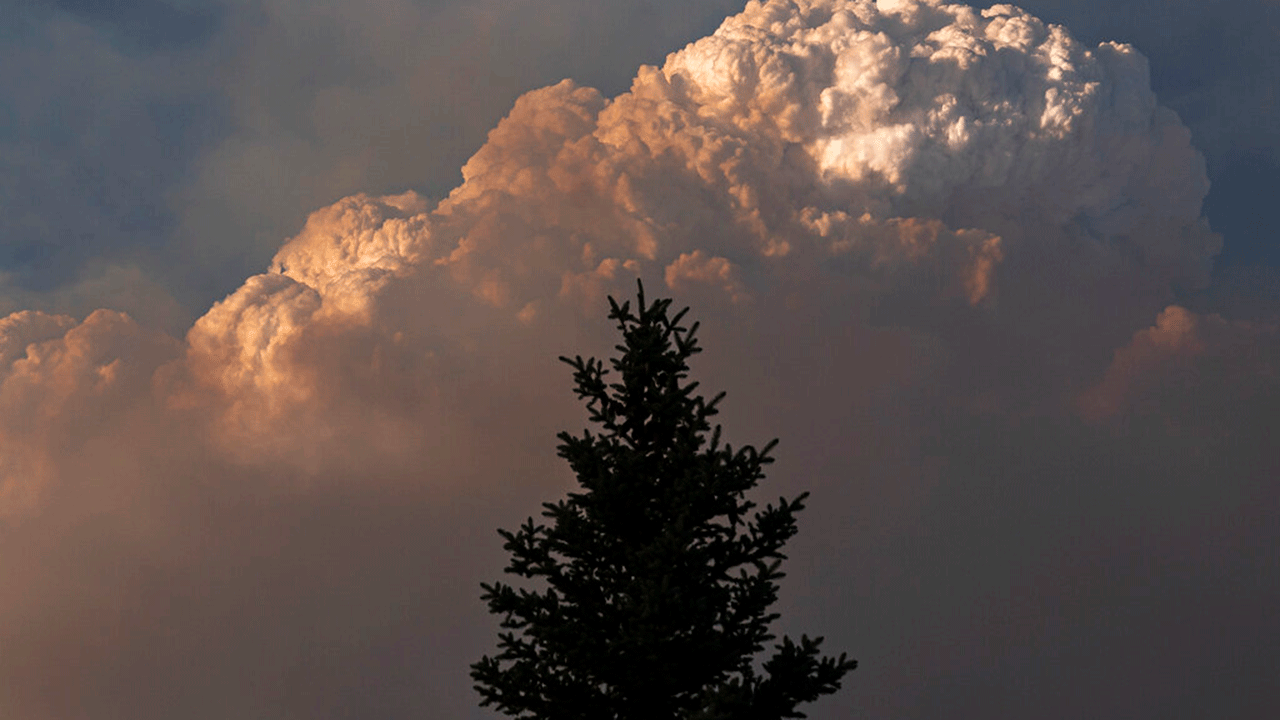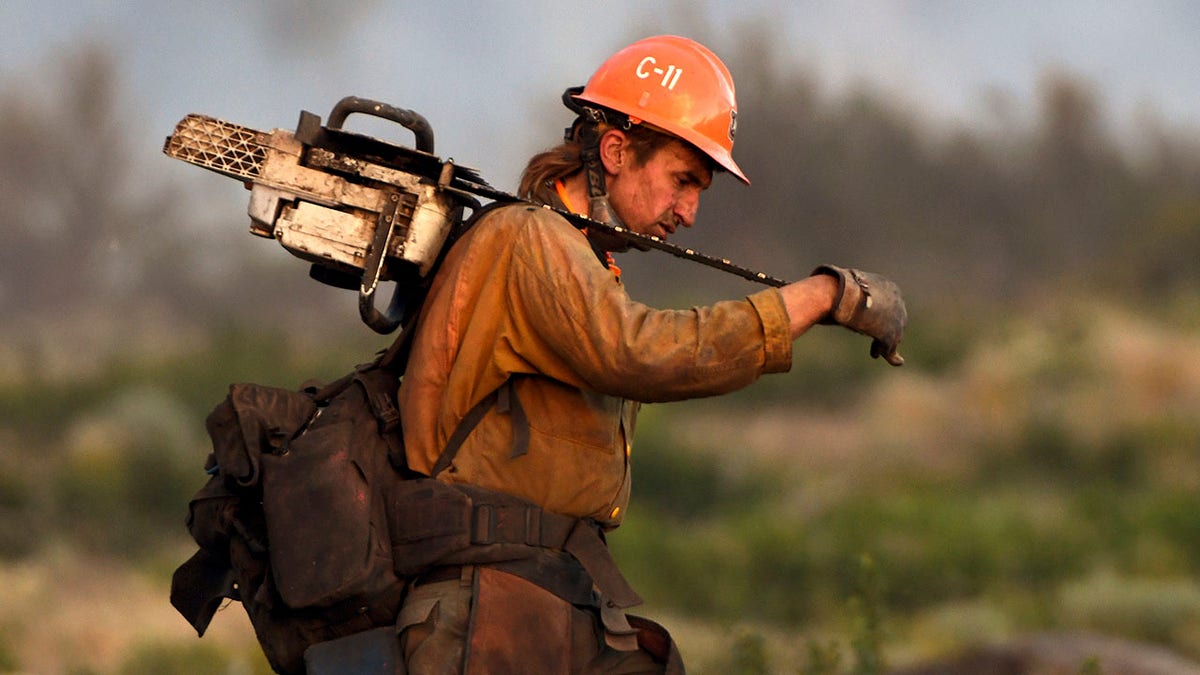Firefighters prepare for sweltering weekend as wildfires scorch California, Oregon
Senior correspondent Claudia Cowan reports on wildfires that have destroyed towns and span 14 western states.
More than 75 million acres across America have burned in the last decade. The California cities of Paradise and Concow were both destroyed in 2018, and tragically, 349 wildfire-related fatalities have occurred in the past 20 years.
These aren’t just numbers on a page for bureaucrats to debate; these are real lives, properties and wildlife habitats being permanently lost to catastrophic wildfires. More than 1 million acres have already burned this year, and it is not even August.
It is unacceptable to allow the fire season to become a year-round risk when we have tools at our disposal to reduce and prevent fires. Blaming climate change for the fires and then refusing to implement any kind of on-the-ground solution is tantamount to fiddling while Rome burns.
American forests are unhealthy, but we can change that.
NORTHERN CALIFORNIA TOWN BURNS TO ASHES IN DEVASTATING WILDFIRE
As the only two foresters in Congress, we’ve come together to propose science-based solutions to prevent these catastrophic fires from happening in the first place.
We’ve introduced legislation that provides a new management concept based on cutting-edge Forest Service mapping to address firesheds. What is a fireshed? A fireshed is a landscape-scale area that faces similar wildfire threats where a fire management strategy could affect fire outcomes. In other words these are landscapes at extremely high risk of catastrophic fire.
More than 80 million acres of our national forests are overgrown and in dire need of active management, making them tinderboxes for the smallest stray spark. The only way we can prevent wildfires from getting out of control is addressing them long before they ignite.
According to the latest Forest Service fireshed mapping, 71% of Bureau of Land Management lands and 89% of Forest Service lands "have the potential for wildfires to ignite and spread to communities." This equates to hundreds of western communities with higher predicted fire risk than the horrific tragedy that occurred in Paradise in 2018.
RAGING WILDFIRE DESTROYS PARTS OF NORTHERN CALIFORNIA GOLD RUSH TOWN
By focusing on firesheds, land managers will better be able to target treatments in the highest risk areas with the worst forest health conditions.

The Bootleg Fire smoke plume grows over a single tree on Monday, July, 12, 2021 near Bly, Ore. An army of firefighters is working in hot, dry and windy weather to contain fires chewing through wilderness and burning homes across drought-stricken Western states. A high-pressure system that created the second intense heat wave of the year is weakening Tuesday, but temperatures are forecast to remain above normal on the lines of more than 60 active large fires. (AP Photo/Nathan Howard)
By thinking in terms of firesheds and how fires spread across them, we can proactively identify the highest risk communities within the fireshed and prioritize projects based on threats to public health and safety, critical infrastructure, wildlife habitats, and watershed quality.
FIREFIGHTER BATTLING WESTERN WILDFIRES SHARES HIS STORY ON FRONT LINES
But simply identifying where we need to address fire risk is not enough; we must make an immediate and profound change.
More than 80 million acres of our national forests are overgrown and in dire need of active management, making them tinderboxes for the smallest stray spark. The only way we can prevent wildfires from getting out of control is addressing them long before they ignite.
More from Opinion
We need forest management that uses proven science to identify high-risk areas, clear hazardous brush, thin dead and decaying trees, and provide healthy space for remaining trees to grow far enough apart to prevent fires from climbing into the canopy and spreading from tree to tree at an uncontrollable rate.
CLICK HERE TO GET THE OPINION NEWSLETTER
Here in Congress, we can facilitate responsible forest management by simplifying and expediting environmental analyses, cutting bureaucratic red tape and frivolous litigation, giving land managers essential management resources, accelerating reviews for reforestation activities and much more.

A member of the U.S. Forest Service's Trinity Hotshots firefighting crew carries a chain saw while hiking out of the burn zone Monday, June 28, 2021, at the Lava Fire north of Weed, Calif. (Scott Stoddard/Grants Pass Daily Courier via AP)
We repeatedly hear the same refrain: forest management isn’t enough, we need more to address climate change. Forest management isn’t the only solution to the environmental challenges we face, but it is a winning solution. Reducing fuel loads is scientifically proven to reduce wildfire risk and protect at-risk communities and wildlife habitats immediately.
This shouldn’t be partisan. We can’t keep waiting for a silver bullet to address every environmental problem at once.
CLICK HERE TO GET THE FOX NEWS APP
Communities at risk of fire across the country are begging for action now. Every year we delay action is another year of lost lives, property, economic revenue and much more.
We are drawing on our firsthand experience to put comprehensive, science-based solutions forward to an issue endangering millions of Americans. Our forests are burning, and there’s no time to waste.
Republican Jim Risch represents Idaho in the United States Senate.






















